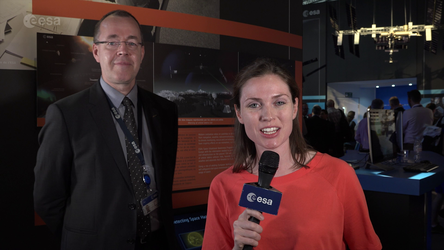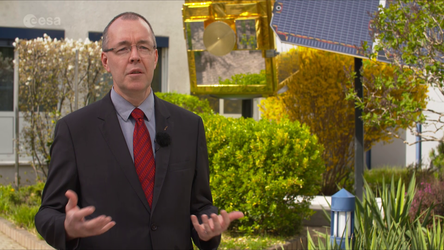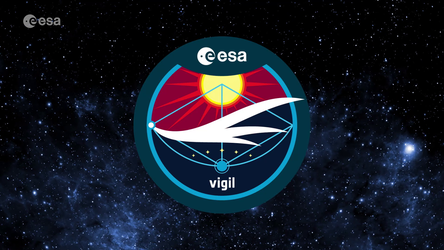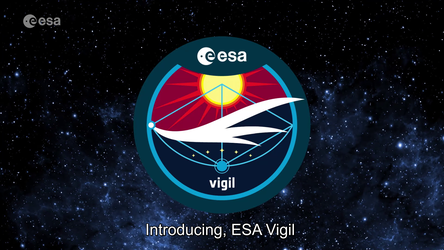Accept all cookies Accept only essential cookies See our Cookie Notice

About ESA
The European Space Agency (ESA) is Europe’s gateway to space. Its mission is to shape the development of Europe’s space capability and ensure that investment in space continues to deliver benefits to the citizens of Europe and the world.
Highlights
ESA - United space in Europe
This is ESA ESA facts Member States & Cooperating States Funding Director General Top management For Member State Delegations European vision European Space Policy ESA & EU Space Councils Responsibility & Sustainability Annual Report Calendar of meetings Corporate newsEstablishments & sites
ESA Headquarters ESA ESTEC ESA ESOC ESA ESRIN ESA EAC ESA ESAC Europe's Spaceport ESA ESEC ESA ECSAT Brussels Office Washington OfficeWorking with ESA
Business with ESA ESA Commercialisation Gateway Law at ESA Careers Cyber resilience at ESA IT at ESA Newsroom Partnerships Merchandising Licence Education Open Space Innovation Platform Integrity and Reporting Administrative Tribunal Health and SafetyMore about ESA
History ESA Historical Archives Exhibitions Publications Art & Culture ESA Merchandise Kids Diversity ESA Brand Centre ESA ChampionsLatest
Space in Member States
Find out more about space activities in our 23 Member States, and understand how ESA works together with their national agencies, institutions and organisations.
Science & Exploration
Exploring our Solar System and unlocking the secrets of the Universe
Go to topicAstronauts
Missions
Juice Euclid Webb Solar Orbiter BepiColombo Gaia ExoMars Cheops Exoplanet missions More missionsActivities
International Space Station Orion service module Gateway Concordia Caves & Pangaea BenefitsLatest
Space Safety
Protecting life and infrastructure on Earth and in orbit
Go to topicAsteroids
Asteroids and Planetary Defence Asteroid danger explained Flyeye telescope: asteroid detection Hera mission: asteroid deflection Near-Earth Object Coordination CentreSpace junk
About space debris Space debris by the numbers Space Environment Report In space refuelling, refurbishing and removingSafety from space
Clean Space ecodesign Zero Debris Technologies Space for Earth Supporting Sustainable DevelopmentLatest
Applications
Using space to benefit citizens and meet future challenges on Earth
Go to topicObserving the Earth
Observing the Earth Future EO Copernicus Meteorology Space for our climate Satellite missionsCommercialisation
ESA Commercialisation Gateway Open Space Innovation Platform Business Incubation ESA Space SolutionsLatest
Enabling & Support
Making space accessible and developing the technologies for the future
Go to topicBuilding missions
Space Engineering and Technology Test centre Laboratories Concurrent Design Facility Preparing for the future Shaping the Future Discovery and Preparation Advanced Concepts TeamSpace transportation
Space Transportation Ariane Vega Space Rider Future space transportation Boost! Europe's Spaceport Launches from Europe's Spaceport from 2012Latest

Solar warning
Thank you for liking
You have already liked this page, you can only like it once!
ESA’s space weather expert, Juha-Pekka Luntama, took to the stage at this year’s New Scientist Live to illustrate the hazards that come from our star and the agency’s plan to protect infrastructure on Earth and in space.
Space weather refers to the environmental conditions in space as influenced by solar activity. Besides emitting a continuous stream of electrically charged atomic particles, the Sun periodically sneezes out billions of tonnes of material threaded with magnetic fields in colossal-scale ‘coronal mass ejections’ — immense clouds of matter.
“People do not realise just how reliant humanity is on satellite technology, from mobile phone communication and GPS, to navigation systems, power grids and weather services. These tools that are so fundamental to our way of life are vulnerable to even medium-sized outbursts from our raging star.” explains Juha-Pekka.
ESA and European industry are currently preparing for the Lagrange mission, the first-ever satellite placed onto the gravitational plateau 150 million km behind Earth, known as L5. From there it has a constant view of the side of our star that we cannot see from Earth. This allows the spacecraft to supply vital data on the Sun’s behaviour before it affects us, feeding advanced warnings into Europe's Space Weather services network that will ultimately allow economically vital infrastructure to be protected.
In the event of extreme solar weather, these warnings will ensure astronauts on the International Space Station (ISS) have time to get to safety, and that power grid operators can take necessary measures to protect their networks and ensure continued power delivery. Vitally, these warnings will also provide satellite operators with the time to take defensive measures needed to protect space infrastructure.
Juha-Pekka adds, "The Lagrange mission is the first of its kind, and as technology develops, the warnings and alerts it will enable are becoming more necessary every day."
For more information on the Lagrange mission, click here.
#SolarWarning
-
CREDIT
ESA -
LICENCE
ESA Standard Licence

Catching up with space weather

ESA's Space Hazards Programme

Space is a risky place

Introducing: ESA Vigil















 Germany
Germany
 Austria
Austria
 Belgium
Belgium
 Denmark
Denmark
 Spain
Spain
 Estonia
Estonia
 Finland
Finland
 France
France
 Greece
Greece
 Hungary
Hungary
 Ireland
Ireland
 Italy
Italy
 Luxembourg
Luxembourg
 Norway
Norway
 The Netherlands
The Netherlands
 Poland
Poland
 Portugal
Portugal
 Czechia
Czechia
 Romania
Romania
 United Kingdom
United Kingdom
 Slovenia
Slovenia
 Sweden
Sweden
 Switzerland
Switzerland
























